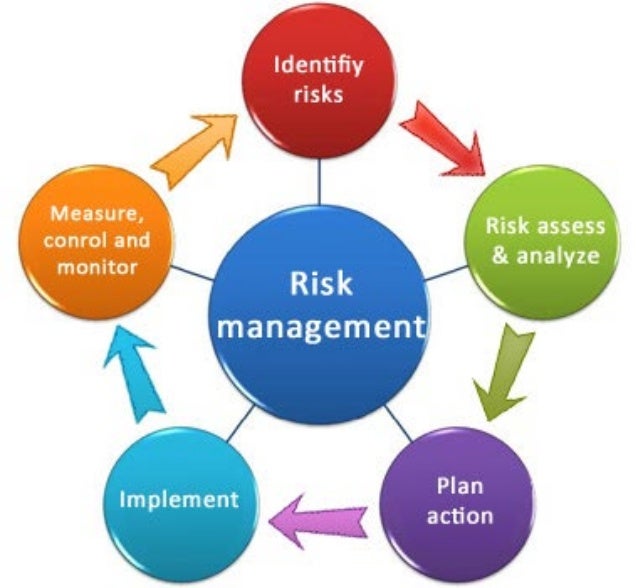Search result

Telecom companies today depend on third-parties to help run their operations. One corporation may have a long list of suppliers on its payroll. Alliances, partnerships, and other relationships can also make part of the business. Granted, they contribute to the success of entities. The only thing that does not work is that they can put the firm at risk for one reason or the other.
Thankfully, extended enterprise risk management (EERM) exists to help reduce the problems that a company can face with third parties. This implies that it is vital even for new business persons looking for telecom business for sale not to start any operations without thinking of implementing an excellent risk management program. There are various reasons EERM is vital for telecom firms and some of them are discussed below.
It Helps Businesses to Have Better Risk Cultures
A business that understands the types of risks it can face from outside forces naturally has better ways of mitigating these tragic events. Ultimately, this can result in reduced volatility giving the establishment a great competitive edge. Preparing well in advance for future risks can help minimize business interruptions, so that everything falls in place as it should.
Enables Investors to Treat Risk as Opportunities
Extended enterprise risk management matters to businesses because it looks at risks in a holistic manner. Businesspersons can view risks in another way as opportunities to go a step further. Investors get to know how to position themselves best to take advantage of market opportunities.
EERM ensures that you are ready for any risks that may come your way. Seeing the risks coming in way before means that you will not blindly walk into a regrettable situation. This ensures that you are always a step ahead in regards to tracking risks that may crop up in the future. As a result, it becomes easier to develop workable strategies making certain your business will not be affected too much on the negative side.
Enhanced Risk Reporting
Another reason it is important for telecom companies to implement extended enterprise risk management strategies is the fact that it helps to support better risk reporting measures. EERM supports more effective reporting, structure, and analysis of third-party risks. This way, a company can have standardized reports that executives and directors can use to come up with improved ways on how to handle these risks. The leadership can identify the areas of business that are more prone to risk. The reports can also help leaders to have a better understanding of risk thresholds, tolerances, and appetite.
Offers Framework for Evaluating Risk
EERM comes in handy when it comes to developing indicators that assist in detecting risk events that can attack an entity in the future. This is beneficial because it makes it possible for the parties involved to offer early warnings. Extended enterprise risk management also offers a more comprehensive viewpoint on different types of risks so that they are handled in the proper way should the risks ever arise.
Better Use of Resources
In an establishment that does not have ERM, you may find that many people have to involve themselves in the process of reporting and managing risks. In most cases, it may not be necessary and a firm may end up wasting resources on this matter. Extended enterprise risk management programs assist a company in regards to enhancing the tools and framework that are used to perform risk management. Note that this does not do away with day to day risk management. It, however, gets rid of redundant processes by making certain that the proper amount of resources are employed to handle risk.

Digital transformation has become a buzzword across every sector in business. Leaders are feeling pressure on all sides to innovate and digitize. But successful digital transformation as a concept goes deeper than rolling out new tech and updating old systems; it requires a change in thinking, leadership, collaboration and decision-making, too.
Digital transformation involves using various technologies to transform the way a company does business; going beyond upgrading outdated systems to completely optimize and transform processes.
Here's more on how companies can achieve these aims and avoid some of the commonplace pitfalls associated with digital transformation.
Drive Tech Changes with Business Objectives
As Harvard Business Review reports, despite C-suite leaders denoting digital transformation (DT) risk as their absolute top concern in 2019, less than one-third of DT initiatives actually realize their goals. Another way to look at it is that approximately $900 billion out of every $1.3 trillion devoted to DT last year ended up going to waste.
These statistics underscore the serious challenges associated with DT, and how easy it is to end up "barking up the wrong tree" - and throwing hard-earned funds away - without a thorough understanding of the task at hand.
First of all, any and all attempts at digital transformation must be tied to larger business objectives. Otherwise, businesses will find themselves footing the bills for shiny new toys that do little to actually impact the bottom line.
Set business strategy first, complete with tangible objectives - like increasing product speed to market, improving workflow efficiency across departments, improving the customer service experience, etc. - before investing in tech. Then prioritize the innovations that will best support those specific goals in terms of return on investment.
Components of Digital Transformation Today
DT is a multi-faceted endeavor, one that requires buy in from the C-suite, IT teams and every department in between.
Here are just a few key components of digital transformation today:
Optimize Customer Experience
Forward-thinking companies are using digital advances to better understand customers in order to optimize their experiences, as MIT Sloan Management Review outlines.
The first stage here is harnessing advanced analytics services to better comprehend client behaviors and preferences across a wide range of sources, including social media.
Next, is implementing tech to smooth out the customer journey. A good example of this is the way many financial services companies are facilitating in-app transactions that used to require a phone call or in-person appointment.
Lastly, organizations can improve the speed and personalization of their customer service experiences using tech like artificial intelligence chatbots, integration of services across channels and self-service options for users.
Empowering Workforces to Make Data-Driven Decisions
The way companies approach data analytics is central to their DT outcomes. More companies than ever before are aiming to empower their teams to make data-driven decisions with the aim of improving business outcomes across the board.
According to a recent Harvard Business Review study sponsored by ThoughtSpot, 86 percent of leaders surveyed believe their frontline workers "need better technology and more insight" to power transformative decision-making. This speaks to the crucial role of self-service AI data analytics platforms in overall digital transformation.
Folding Digitization & Tech into Culture
Taking a tech-focused approach to DT without considering culture is a recipe for failure. Leaders need to consider how they are communicating about the various elements of digital transformation, as well as how their actions are encouraging or discouraging employees to get on board.
Managers must proactively address worker fears of change, automation and "the unknown" - as these can contribute to resistance against the adoption and embracing of DT.
Companies can only achieve DT with the right mix of goal-driven strategy, tech and cultural changes, if you are looking for advanced comparsion for financial services, we want to help you find the best service providers that fits your needs and goals.

Once the domain of a shady underworld and knowing the "right people," sports betting has evolved with the times. Today you can bet on your favorite teams without leaving your home or even firing up your PC.
These days, sports betting companies like Sbobet offer their clients the convenience of mobile betting. As you'll see in the image below, mobile betters have full access to all the same features as they do on a computer, but in a simplified format.
Considering that sports betting started in back alleys, it's come a long way in a short time. This progress was, however, out of necessity. With online gambling providing punters a quick and easy way to get their kicks, sports betting companies had to adapt or become obsolete.
Mobile Is the Ideal Medium
With mobile technology improving consistently, being out of contact is somewhat tricky. Combine that with the power of the web, and it's easy for punters to bet on matches globally. Punters took to the convenience of mobile betting quickly.
After all, if they're up at three in the morning desperate for some action, they've got the perfect outlet. They might bet on basketball in the United States or on an ostrich race halfway around the world.
Mobile Is Convenient for the Sports Betting Companies Too
Manually keeping track of all the action in one city is difficult. You'd have to find the matches, physically work out the odds, keep track of bets, and calculate payouts at the end.
With the introduction of computers, these tasks become a lot simpler. Sports betting companies could now also track games in several locations and assign odds using specialized algorithms. Mobile was a natural extension of this functionality when smartphones came onto the scene.
Mobile adds an extra element of excitement for the punter. For example, they can make bets from the stadium while watching the game.
Why Aren't There Many Sports Betting Apps?
You'd think that sports betting companies like Sbobet would develop an app for their clients to use. Most have, however, opted to go a different way. They've decided instead to create mobile sites designed to work across a range of devices.
This broader approach makes sense in that it allows them to reach the widest audience. The broad reach does, however, come at the expense of user experience. Users operating off smaller screens find the process somewhat frustrating.
The upshot is that while all the basic features are present across a range of devices, accessing all of them on a smaller screen requires some practice. Still, as punters, we're happy to swap some functionality for the ability to place our bets on the go.
The Future of Sports Betting
Sports betting companies are highly responsive to their clients' needs. With the increasing popularity of mobile betting, we can expect companies to streamline their operations in this area even more in the future.
More technologically advanced smartphones will further assist in improving the overall user experience for mobile betting. Who knows - maybe ten years from now, smartwatches will become the next evolution in mobile betting.
© 2023 YouMobile Inc. All rights reserved





